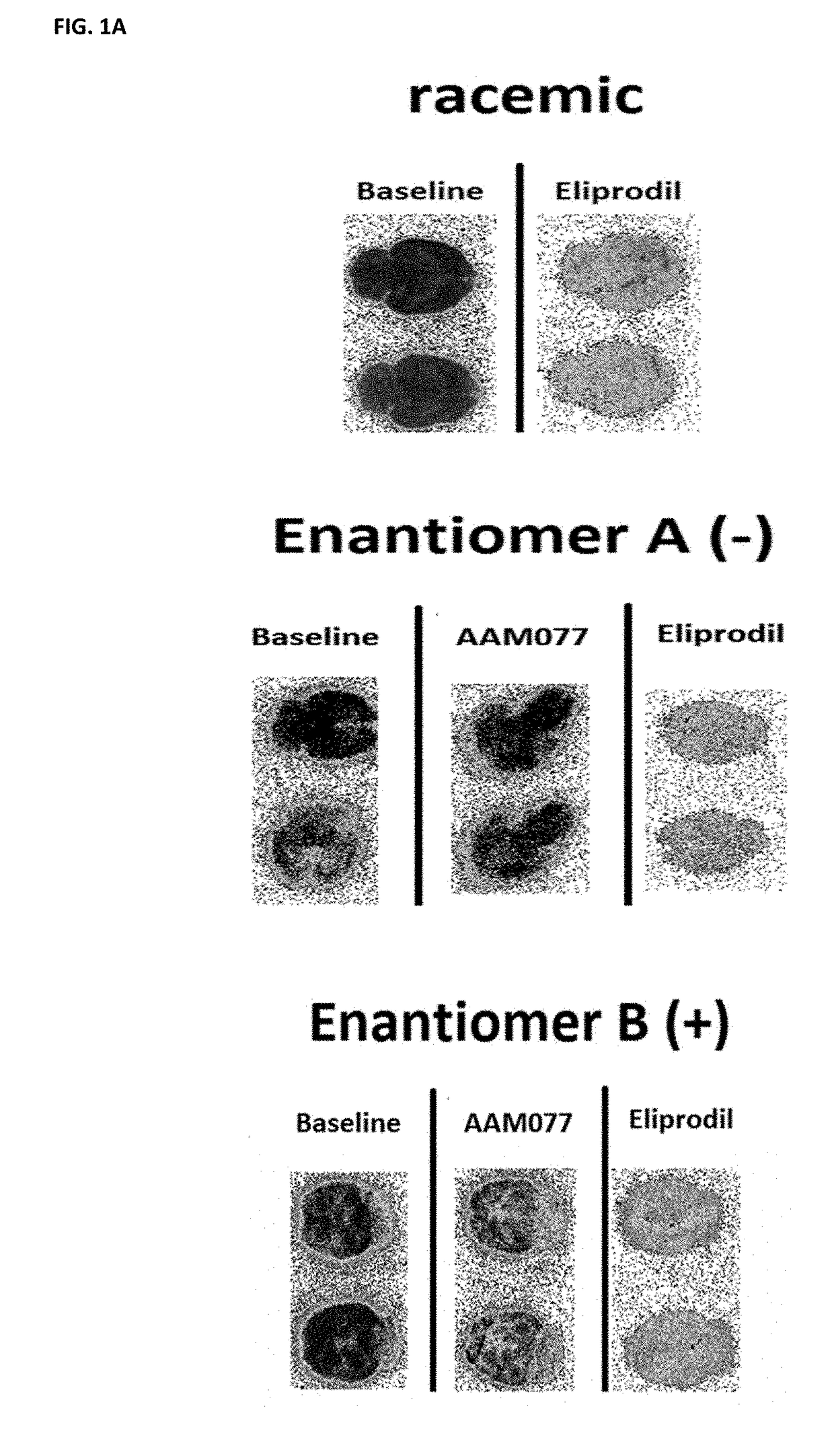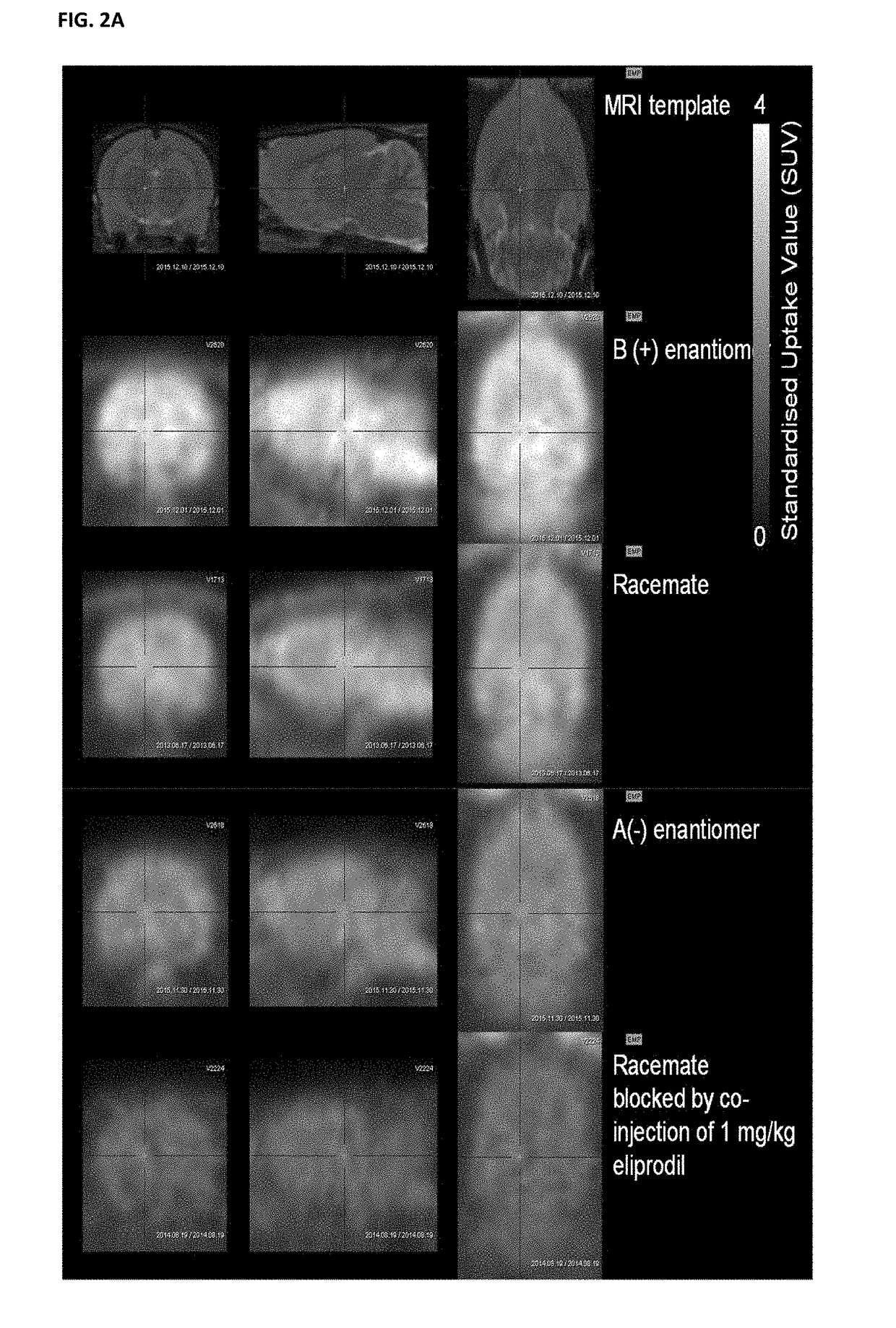Benzazepin-1-ol-derived pet ligands with high in vivo NMDA specificity
- Summary
- Abstract
- Description
- Claims
- Application Information
AI Technical Summary
Benefits of technology
Problems solved by technology
Method used
Image
Examples
example 1
[0085]The general methodology for the synthesis of benzazepin-1-ols is known in the art, e.g. from Tewes et al., Chem Med Chem 2010, 5, 687-695. A representative synthetic path as used for producing the present PET ligands is shown in scheme 1 below. The synthetic route of scheme 1 can be adapted by commonly known methods to deliver derivatives of benzazepin-1-ols and substantially all of the PET ligands of the present invention. The skilled person will routinely adapt the synthetic route to be suitable for the synthesis of any PET ligand of the present invention.
example 2
olabeling
[0086]No-carrier-added (n.c.a.) [11C]CO2 was produced via the 14N(p,α)11C nuclear reaction by bombardment of nitrogen gas fortified with 0.5% oxygen using a Cyclone 18 / 9 cyclotron (18-MeV, IBA, Louvain-la-neuve, Belgium). [11C]Iodomethane ([11C]CH3I) was generated in a two-step reaction sequence involving the catalytic reduction of [11C]CO2 to [11C]methane over a supported nickel catalyst and subsequent gas phase iodination [Larsen et al, Appl Radiat Isot, 48, 153-157, 1997]. [11C]CH3I was bubbled into the reaction vial containing precursor NB1 (1 mg) and cesium carbonate (5 mg) in DMF (0.5 mL). After the transfer was complete, the closed reaction vial was heated at 90° C. for 3 min. The reaction mixture was diluted with water (1.5 mL), and the crude product was purified using semi-preparative HPLC column (reversed-phase Sunfire C18 column Waters, Ireland, 5 μm, 10×150 mm, product peak at 12.8 min). The collected product was diluted with water (10 mL), trapped on a C18 cart...
example 3
olabeling
[0088][18F]fluoride was produced by bombardment of enriched 18O-water using a Cyclone 18 / 9 cyclotron (18-MeV; IBA, Belgium). The aqueous 18F-fluoride was delivered from cyclotron to the hot cell and trapped on an anion exchange cartridge (Waters, Ireland, SepPak Accell QMA cartridge carbonate). After elution with a tetrabutylammonium hydroxide solution (0.18 M in MeOH, 1 mL) into a reaction vessel the solvents were evaporated at 90° C. under reduced pressure with a gentle inflow of nitrogen gas. Azeotropic drying was carried out three times using 1 mL of acetonitrile each.
[0089]A solution of 5 mg ethylene ditosylate in 0.5 mL acetonitrile was added and the reaction mixture was stirred at 100° C. for 7 min. After dilution with water (2.5 mL) the crude product was purified by semi-preparative HPLC column (Sunfire, Waters, Ireland, C18 column, 5 μm, 10×150 mm). [18F]fluoroethyl tosylate was diluted with 40 mL of water and trapped on a C18 light cartridge (Waters, Ireland, prec...
PUM
 Login to View More
Login to View More Abstract
Description
Claims
Application Information
 Login to View More
Login to View More - R&D
- Intellectual Property
- Life Sciences
- Materials
- Tech Scout
- Unparalleled Data Quality
- Higher Quality Content
- 60% Fewer Hallucinations
Browse by: Latest US Patents, China's latest patents, Technical Efficacy Thesaurus, Application Domain, Technology Topic, Popular Technical Reports.
© 2025 PatSnap. All rights reserved.Legal|Privacy policy|Modern Slavery Act Transparency Statement|Sitemap|About US| Contact US: help@patsnap.com



